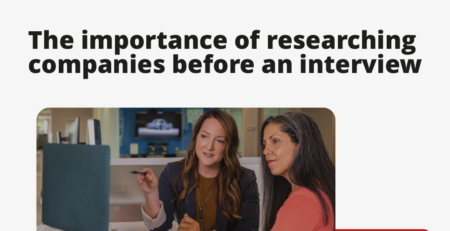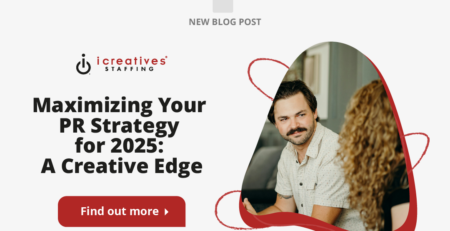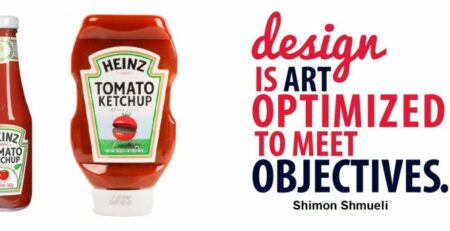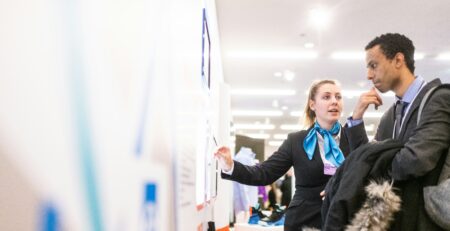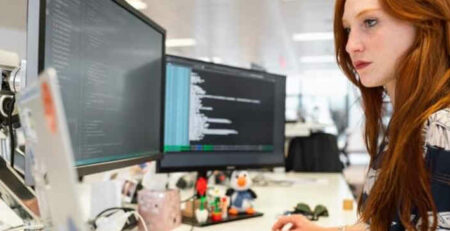Remote Designers, Read This Before You Burn Out! 15 Survival Tips Inside
As the digital workspace continues to evolve, remote designers are finding themselves at the forefront of this transformation. The flexibility of working from anywhere has its perks, but it also comes with its own set of challenges, particularly the risk of burnout. Burnout among remote designers is not just about long hours; it’s about the blurring lines between work and home, the isolation, and the constant need for self-motivation and discipline.
The good news is that burnout is preventable, and there are strategies that can help maintain both productivity and mental health. This guide is designed to provide remote designers with 15 essential survival tips to thrive in a remote working environment. From setting up a dedicated workspace to understanding the importance of disconnecting, each tip is aimed at enhancing your work-life balance and ensuring your creative energies keep flowing without burning out.
Moreover, integrating these practices can lead to a more fulfilling and sustainable career. Whether you are a freelance designer or part of a remote team, these insights will help you build resilience against the pressures of remote work. The goal is not just to survive but to thrive, making the most of the opportunities that remote working offers while safeguarding your well-being.
Let’s dive into the most frequently asked questions by remote designers who are seeking to optimize their work habits and environment to prevent burnout. These questions reflect common concerns and challenges faced in the remote design landscape, providing a foundation for the survival tips discussed in this article.
By addressing these questions, we aim to equip you with the knowledge and tools necessary for a successful and healthy remote working life. Remember, understanding how to manage your workload effectively while maintaining your health and creativity is key to your success as a remote designer.
Most Asked Questions
- How can I effectively manage my workload to avoid feeling overwhelmed?
- What are the best tools and technologies for remote designers to stay organized and efficient?
- How important is setting up a dedicated workspace, and what are the best practices?
- What strategies can I use to maintain communication and collaboration with my team remotely?
- How do I maintain a healthy work-life balance as a remote designer?
How can I effectively manage my workload to avoid feeling overwhelmed?
Managing workload efficiently is crucial for remote designers to prevent burnout and maintain productivity. The first step is to clearly define your work hours and stick to them. This creates a routine and helps in separating work from personal life. Utilizing tools like Google Calendar or Trello can aid in scheduling and prioritizing tasks effectively.
Breaking down projects into smaller, manageable tasks can also prevent feeling overwhelmed. This not only makes the tasks seem less daunting but also provides a clear roadmap of what needs to be done. Each small victory in completing tasks can boost your morale and productivity.
It’s also vital to set realistic deadlines. When setting these, consider your working speed and other commitments. Communicate these timelines with your team or clients to ensure there’s a mutual understanding of your schedule.
Delegation is another key aspect. If you’re part of a team, don’t hesitate to delegate tasks to others. This not only lightens your workload but also helps in building a cooperative team environment.
Regular breaks are essential. The Pomodoro Technique, where you work for 25 minutes and take a 5-minute break, can be particularly effective. These short breaks help in maintaining concentration and preventing fatigue.
Lastly, review your workload regularly. This helps in identifying any bottlenecks or tasks that require more attention and adjusting your plan accordingly. Using a tool like Jira can help in tracking progress and managing tasks efficiently.
For more insights on managing remote teams, consider reading Tips for Managing a Remote Workforce.
What are the best tools and technologies for remote designers to stay organized and efficient?
In the digital age, having the right tools and technologies is essential for remote designers to stay organized and efficient. Project management tools like Asana and Monday.com provide platforms where tasks can be easily managed and tracked. These tools help in setting deadlines, assigning tasks, and monitoring progress, all of which are crucial for effective workload management.
Cloud storage services such as Google Drive and Dropbox are indispensable for remote designers. They not only ensure that all files are securely backed up but also allow easy sharing and collaboration across teams, regardless of geographical boundaries.
Communication tools like Slack and Zoom are vital for maintaining clear and continuous communication with team members. These tools support instant messaging and video conferencing, which are essential for brainstorming sessions and regular check-ins.
For design-specific needs, software like Adobe Creative Cloud offers a suite of applications that are fundamental for any designer. Additionally, tools like Sketch and Figma provide collaborative platforms that are particularly tailored for UI/UX design, allowing multiple users to work on the same project simultaneously.
Time management tools such as RescueTime can help designers track how much time they spend on various tasks, providing insights into productivity patterns and potential distractions.
Integrating these tools into your daily routine can significantly enhance your efficiency and organization. For more on optimizing productivity, check out The Ultimate Guide to Boost Your Productivity with AI Tools at Work.

How important is setting up a dedicated workspace, and what are the best practices?
Setting up a dedicated workspace is crucial for remote designers, as it helps in creating a boundary between work and personal life. This physical separation is essential in maintaining focus and minimizing distractions. The ideal workspace should be quiet, comfortable, and well-lit, ideally with natural light.
Ergonomics play a vital role in workspace setup. Invest in a good quality chair and desk. The top of your monitor should be at eye level, and your chair should support your back well. This reduces the risk of strain and injury over long periods of sitting.
Organize your workspace to have all necessary tools within reach. This minimizes the need to get up frequently, which can disrupt your workflow. Keep it clutter-free to enhance concentration and creativity.
Personalize your space. Adding personal touches like plants, artwork, or photos can make the space more inviting and stimulating. This not only makes it a pleasant place to work but also helps in boosting creativity.
Consider the acoustics of your space. If you’re in a noisy environment, noise-canceling headphones can be a great investment to maintain focus.
Regularly change your workspace setup. This can prevent the monotony of working from the same place every day and can invigorate your creativity and productivity.
For more detailed guidance on setting up a remote office, you might find How to Become an Effective Remote Manager useful.
What strategies can I use to maintain communication and collaboration with my team remotely?
Maintaining effective communication and collaboration in a remote team requires deliberate strategies and tools. Regular video calls can help in maintaining a personal connection with team members, making communications clearer and more personal.
Utilize collaborative tools like Microsoft Teams or Slack. These platforms allow for seamless communication and integration with other work tools, making it easier to share information and collaborate on projects.
Establish clear communication protocols. This includes regular updates, structured daily or weekly meetings, and clear guidelines on how to share information and feedback. This ensures everyone is on the same page and can reduce misunderstandings.
Encourage an open communication culture where team members feel valued and listened to. This can be facilitated through regular one-on-one check-ins and providing platforms for sharing feedback.
Use project management tools like Basecamp or Asana to keep track of progress and deadlines. These tools help in ensuring that everyone knows their responsibilities and how they fit into the larger project timeline.
Document everything. From meeting notes to project updates, make sure there is a record that team members can refer to. This is crucial for ensuring continuity and clarity over time.
For more tips on enhancing team communication, consider exploring Meeting Overload.
How do I maintain a healthy work-life balance as a remote designer?
Maintaining a healthy work-life balance is crucial for preventing burnout as a remote designer. Start by setting and adhering to specific work hours. This helps in creating a routine and makes it easier to disconnect after work.
Make time for breaks during the day. Short breaks can help refresh your mind and improve productivity. Engage in activities that you enjoy and that help you relax during these breaks, such as a short walk or a meditation session.
Set boundaries with clients and colleagues. Make it clear when you are and aren’t available. This helps in managing expectations and reduces the stress of having to be constantly available.
Don’t neglect your social life. Interaction with others is crucial for mental health. Schedule regular social activities, even if they’re virtual, to stay connected with friends and family.
Stay active. Regular physical activity is vital for mental and physical health. Incorporate exercise into your daily routine, whether it’s a home workout or a jog around the neighborhood.
Lastly, make sure to take vacations. Time off work is essential for mental refreshment and can significantly improve your creativity and productivity upon return.
For more on maintaining balance, check out Vacationing as an Entrepreneur.
15 Survival Tips for Remote Designers to Prevent Burnout
Here are 15 essential tips to help remote designers thrive and avoid burnout:
- Establish a Routine: Set fixed start and end times for your workday to separate professional and personal time, helping to prevent burnout.
- Create a Dedicated Workspace: Having a specific area for work helps to mentally separate work from leisure activities and enhances focus.
- Use the Right Tools: Invest in reliable technology and software that streamline workflow and communication, such as project management and design tools.
- Set Clear Goals: Define what you need to achieve daily, weekly, and monthly to keep track of progress and stay motivated.
- Take Regular Breaks: Short breaks throughout the day can prevent fatigue and boost productivity. Techniques like the Pomodoro Technique can be very effective.
- Prioritize Tasks: Use prioritization methods like the Eisenhower Box to manage tasks by urgency and importance, focusing on what truly matters.
- Stay Physically Active: Regular exercise can boost your mood and energy levels, significantly reducing the risk of burnout.
- Practice Mindfulness: Activities like meditation and yoga can help maintain mental health and reduce stress.
- Maintain Social Contacts: Regular interaction with colleagues, friends, and family can provide emotional support and alleviate feelings of isolation.
- Set Boundaries: Communicate your working hours to clients and colleagues to manage expectations and reduce the pressure to be always available.
- Learn to Say No: Taking on more than you can handle can quickly lead to burnout. Be realistic about what you can do and communicate your limits.
- Use Asynchronous Communication: Not every interaction needs to be live; using tools that allow for asynchronous communication can reduce interruptions and pressure.
- Seek Feedback: Regular feedback can guide your work and reduce the time spent on revisions, helping you work more efficiently.
- Invest in Continuous Learning: Keep your skills and knowledge updated to stay inspired and engaged with your work.
- Plan for Downtime: Ensure you take time off to disconnect completely from work, which is crucial for long-term sustainability in any career.
Implementing these tips can help remote designers manage their workloads effectively, maintain their mental health, and continue to produce high-quality work without falling prey to burnout. For more detailed strategies and personal experiences, consider exploring additional resources and community forums dedicated to remote work.
Conclusion
In conclusion, thriving as a remote designer requires a proactive approach to managing workload, utilizing the right tools, setting up an effective workspace, maintaining robust communication, and ensuring a healthy work-life balance. By implementing these strategies, remote designers can not only prevent burnout but also enhance their productivity and satisfaction with their work.
Remember, the key to successful remote work lies in the balance between discipline and flexibility. While it’s important to have structured work hours and a dedicated workspace, it’s equally important to listen to your body and mind, and give yourself the flexibility to adjust as needed.
Adopting these survival tips will not only help you manage your workload more effectively but also improve your overall well-being. With the right mindset and tools, the challenge of remote work can be transformed into a rewarding and sustainable career path.
As you continue on your remote work journey, keep exploring new tools and techniques that can help you stay productive and balanced. The landscape of remote work is ever-evolving, and staying adaptable is key to long-term success.
Lastly, always remember that you’re not alone in this journey. Reach out to fellow designers, participate in online communities, and share your experiences. Collaboration and support from peers can make a significant difference in navigating the challenges of remote work.
For further reading on managing remote teams and enhancing productivity, explore more resources at icreatives Blog.
In today’s competitive market, finding the right creative and marketing expert can be a challenge. But with icreatives, you’re in experienced hands. With 37 years in staffing and a track record of matching more than 10,000 employees to over 1,000 companies worldwide, we know how to connect you with the best. Plus, you only pay if you hire—there’s no risk, only results. Ready to find your perfect creative or marketing expert? HIRE WITH ICREATIVES today!


